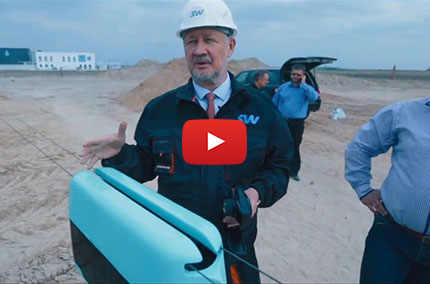Technology Skyway
about “Unitsky Strings of technologies”
SkyWay is an overground high-performance transport technology that has no analogues in the world. This is the speed safety, accessibility, effectivity and environmental friendliness.
SkyWay is a stable basis for information,
energy and transport networks of the new generation.
All the elements at its core have been tested.
SkyWay
- speed – up to 500 km/h;
- span distance – from 30-50 m to 2 km;
- support height – 6-10 m and more;
- maximum declivity – 15% and more;
- diesel fuel consumption – 0.7-0.9 liter/100 passenger/km;
- cost-from 2-3 mln USD/km.
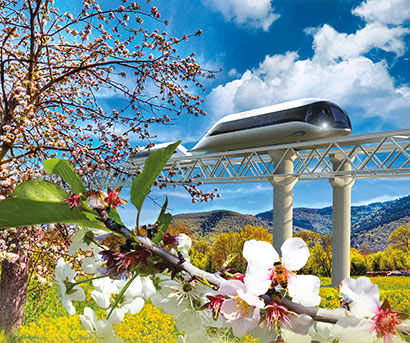
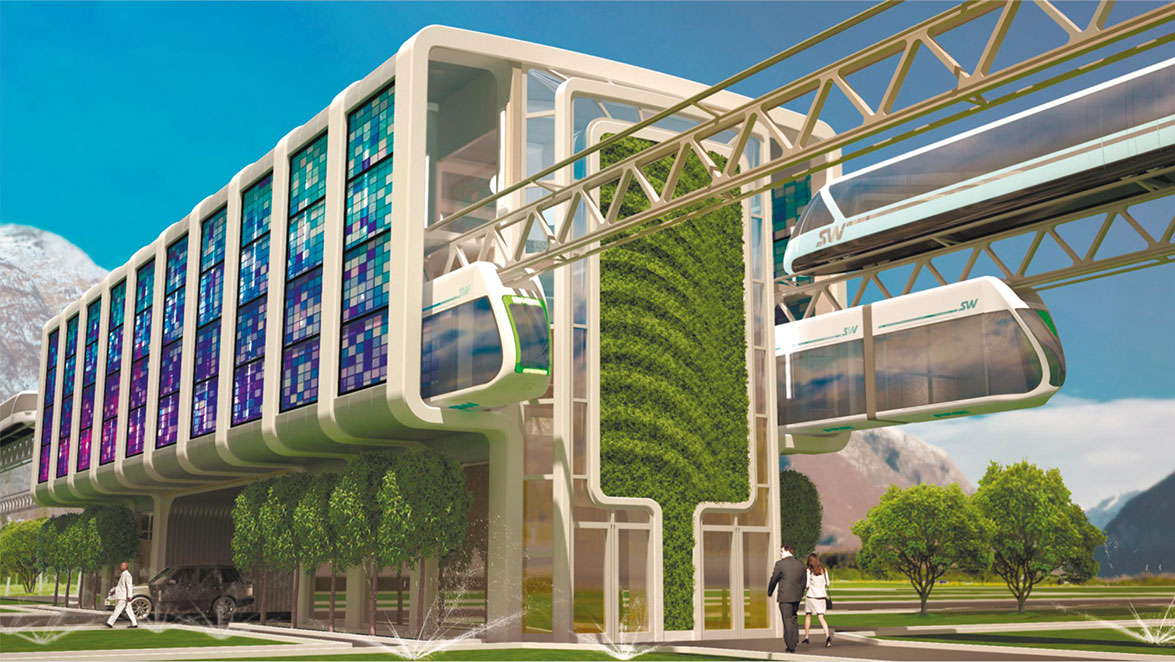
Arrangement of track structure overground provides high safety level
SkyWay is a pole-supported rail transport overpass designed to transfer special rolling stock equipped with an anti-derailment system.
In itself, the rail SkyWay car is a kind of a conventional car mounted on steel wheels Just as a traditional car, it can be driven by a diesel engine, a gasoline engine, a turbine or a combined drive.
If necessary, the engine can run on natural gas, methane, hydrogen, alcohol and other clean fuels.
In addition, electrification of the rail vehicle is possible with the use of an external source of electrical energy (like a trolley bus, tram or subway). Self-generated power supply can also be used, e.g. on board batteries, energy storage units of capacitor, molecular or any other type, fuel cells and others.
The basis of the track structure are tension prestressed uncut string rails or a tension prestressed uncut string-truss structure (heavy and multi-functional transport system).
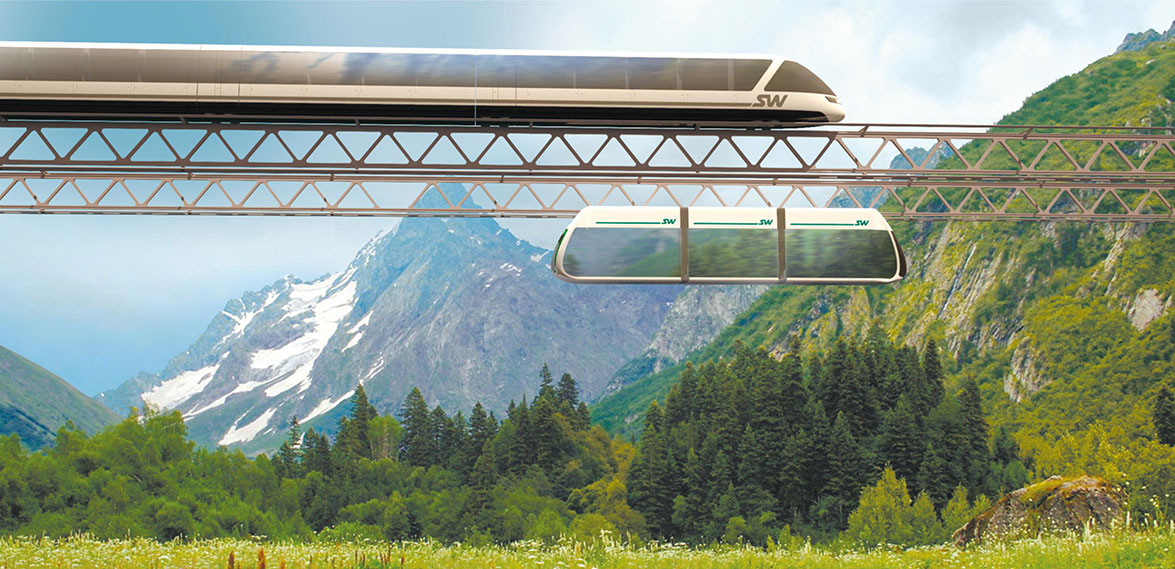
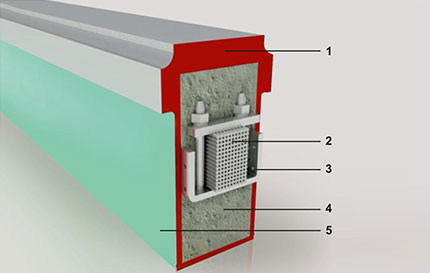
1. railhead
2. string (bundle of steel wires)
3. clamp fastening the string to the body
of the rail
4. filler (special concrete)
5. rail body
String-rail track structure has no joints and expansion (temperature) seams and is noted for a perfect straightness and smooth curves, which is crucial to achieve the highest operational performance of the transport system – high speed, minimum impact stress, low energy consumption.
Due to the anchor (every 2-3 km or more) and intermediate (every 40-60 m or more) supports the track structure is always located above the ground. Arrangement of the track structure above the ground is essential to reduce the cost of construction, to keep environmental friendliness, as well as to ensure the highest level of safety in comparison to all other modes of transport.
SkyWay Advantages
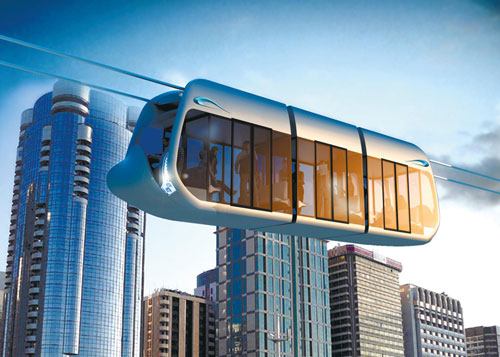
- steel: up to 500-750 tons in comparison with a speedy monorail train and a magnetic levitation train;
- reinforced concrete: up to 15-20 thousand cu. m as compared to a high-speed elevated railroad;
- land acquisition: up to 3-5 hectares in comparison with railways and motorways;
- the volume of excavation: reduction of 20-25 thousand cu. m or more in comparison with mounds of railways and motor roads.
Construction costs (%):
The data is based on the studies of the Institute of Transport named after N.S. Solomenko of the Russian Academy of Sciences, in % of the integral index by types of transport
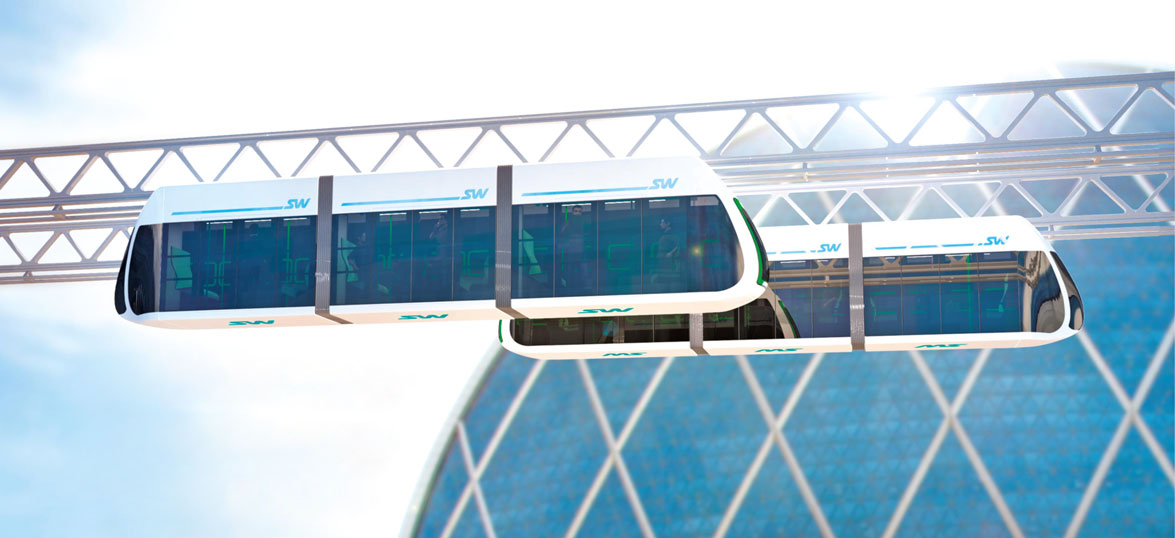
High profitability
- financial expenses on construction and running are less by 5-7 times and more in comparison with other types of off-street transport: railway and tram overpass, magnetic levitation train and monorail as well as underground and surface metro;
- low haulage costs and short-term return on investment of the project – within 3-5 years.
Low cost of constituent parts due to the use of traditional materials, engineering units and assemblies.
Low operational costs:
- all-weather capability;
- high motion speed;
- automatic control system;
- low fuel/energy consumption for the motion;
- reduced personnel for system maintenance.
Low depreciation expenses:
- long service life of the track structure, supports, rolling stock and infrastructure;
- low cost of transport system, rolling stock and infrastructure.
Efficiency (%):
The data is based on the studies of the Institute of Transport named after N.S. Solomenko of the Russian Academy of Sciences, in % of the integral index by types of transport
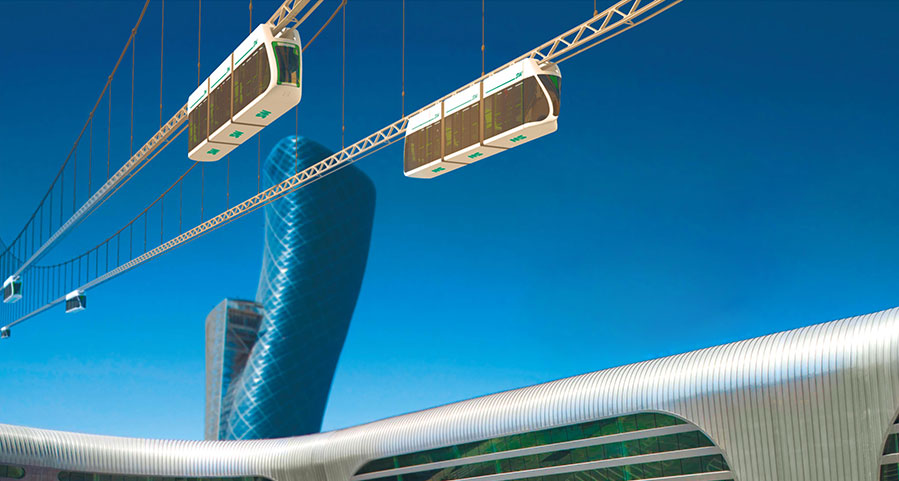
Factors providing high comfort of passenger transportation:
- high evenness of the way and low motion noise;
- low rates of acceleration and slowdown of the rolling stock due to the absence of hindrance to traffic;
- the absence of traffic jams;
- automated control system and the absence of hazardous and unreliable transport interchanges;
- short time of waiting and traveling as well as the possibility of a “door-to-door” ride with the use of individual transport modules.
Comfortability (%):
The data is based on the studies of the Institute of Transport named after N.S. Solomenko of the Russian Academy of Sciences, in % of the integral index by types of transport
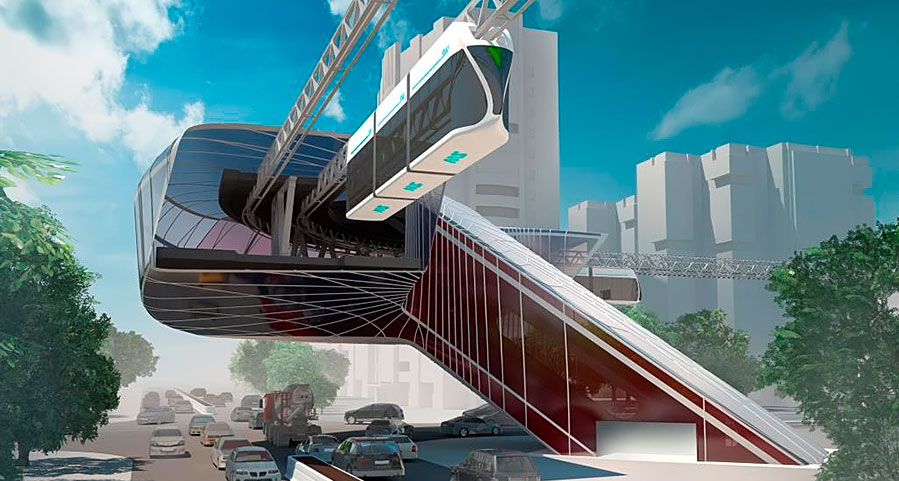
Factors ensuring high safety of traffic:
- avoidance of collisions with ground vehicles,
people and animals due to the arrangement of a track structure above the ground on poles; - high stability of rolling stock due the anti-derailment system and independent suspension at each wheel;
- reduction of accident risk due to lack of a possibility for erosion of recessed support foundations by ground and surface waters;
- a ten-fold strength margin of track structure and resistance of the transport system to floods, tsunamis, earthquakes and other natural disasters.
Transport safety (%):
The data is based on the studies of the Institute of Transport named after N.S. Solomenko of the Russian Academy of Sciences, in % of the integral index by types of transport
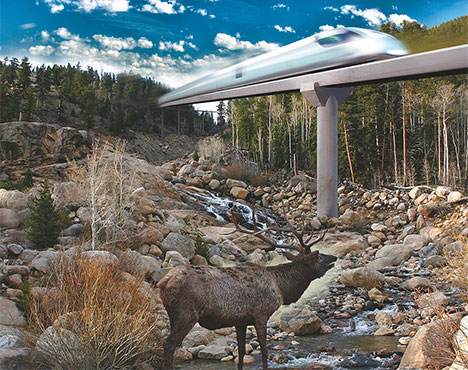
Factors reducing overall environmental pollution:
- absence of dusting and ecologically hazardous soil banks and pits;
- absence of obstacles for animals migration;
- lack of soil swamping due to the absence of obstacles to free flow of ground and surface waters;
- low specific fuel consumption for the transfer of passengers and freights;
- absence of high electric voltages, high currents and strong electromagnetic fields while applying electric traction;
- absence of exhaust gases, de-icing salts and products of tyre wear, as well as asphalt-concrete surfacing.
Ecological compatability (%):
The data is based on the studies of the Institute of Transport named after N.S. Solomenko of the Russian Academy of Sciences, in % of the integral index by types of transport
Linear city
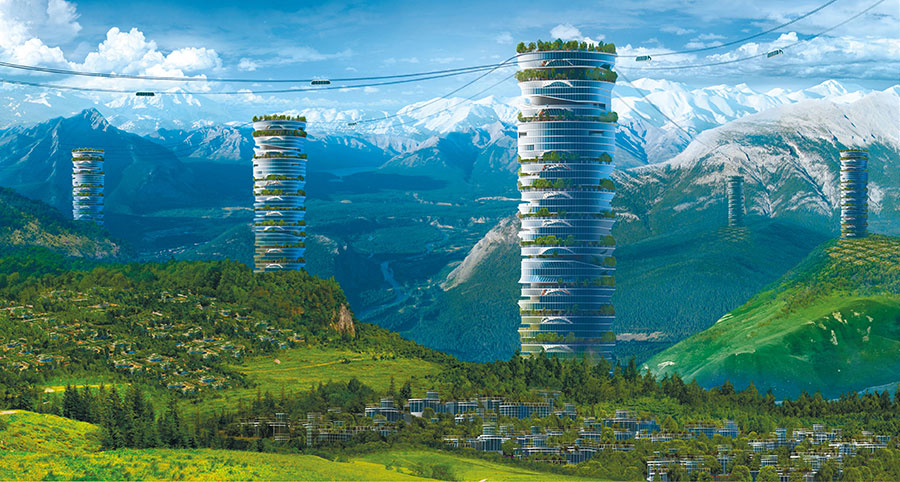
Linear city is an urban settlement of cluster type.
The surface of the earth is reserved for pedestrians and green plants, transport, energy and informational communications are located above the ground at the “second level”.
SkyWay horizontal lifts connect neighboring high-rise buildings, settlements as well as residential, commercial, recreational clusters and allow people to comfortably move between them within few minutes.
Towers stations located on the sea shelf (on pile foundations) have a surface island-platform in the form of a parkland, well-developed on a layer of fertile soil.
SkyWay linear city benefits:
- reduction of expenses on road construction;
- reduction of harmful emissions into the urban atmosphere;
- elimination of accidents on public transport;
- clearance of traffic jams in the city;
- restoration of proper ecology in the city.
Application areas and branches
Oil and gas industry
SkyWay technology provides the following features:
- reduction of costs for main pipeline construction by 35-40%;
- independence of the transport system from the terrain relief;
- operation at lowest possible temperatures, snow drifts and permafrost soils;
- arrangement of heavy wheel-load traffic over the pipeline transport system.
Maximum capacity of a SkyWay track is higher than that of an oil pipeline (one way) – up to 200-300 million tons/year, yet the cost of transporting oil and liquefied gas will be somewhat lower than through oil and gas pipelines. Moreover, oil and liquefied natural gas can be transported in sealed returnable containers (capacity, for example 10 000 kg) tagged with an electronic card bearing the information about its composition, extraction spot, etc. It will make it possible not to mix oil from different fields, as it is done now, but to process light types of oil (sour crude oil, high-paraffin crude oil, etc.) separately. At the same time, construction of a SkyWay pipeline route is less costly than that of a pipeline of the same throughput capacity.
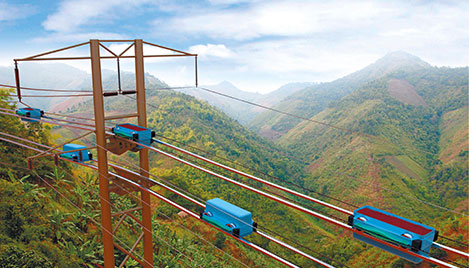
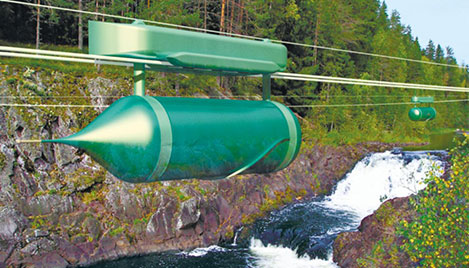
Terrain relief independence
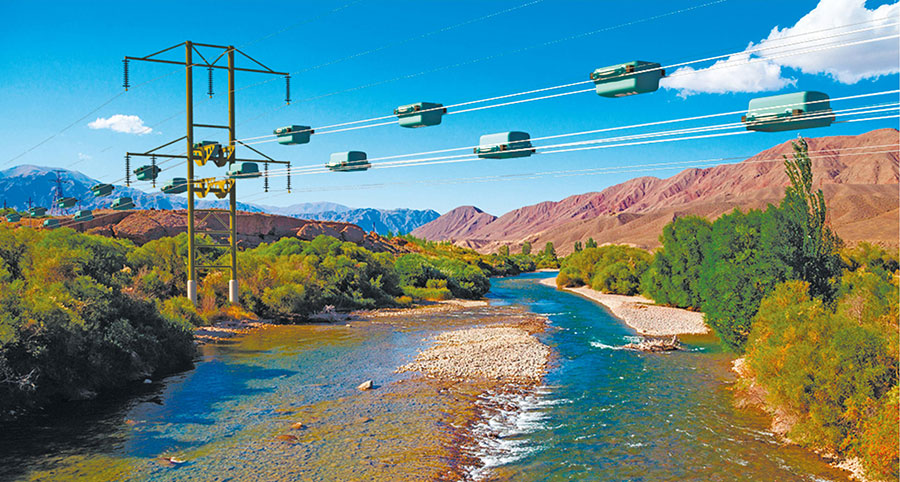
A conventional oil pipeline (gas pipeline) transports only oil (gas) and in one way only, whereas using SkyWay, alongside with them, it would be possible to transfer ore, coal, timber and other raw materials. Foodstuffs, constructional materials, equipment, petrochemical products (gasoline, diesel fuel, etc.), rotation workers and so on can be delivered in the opposite direction.
Loading and unloading of oil and gas containers can be carried out at automated cargo terminals of small size, their diameter will not exceed 100 m.
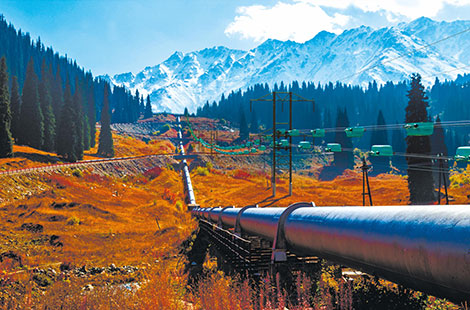
Freight transfer
Special-purpose overground cargo transport system of over 100 million tons per year capacity
Areas of use:
- transportation of bulk cargo (ore, constructional materials, coal, etc.);
- transportation of liquid cargo (oil and petrochemical products, natural drinking water and others.);
- transportation of break bulk cargo (rolled steel, timber and wood products, etc.);
- transfer of containers;
- transfer of special cargo.
Flexible integration into the existing infrastructure
A loading terminal is situated at the place of the bulk cargo storage and is loaded with the use of a conventional conveyor. Unloading is carried out in the integration with the existing logistics infrastructure. The compact size of a freight train and innovative solutions allow to Perform loading/unloading the move at the rate of ud to 8 tons Der second (up to 250 million tons per year).
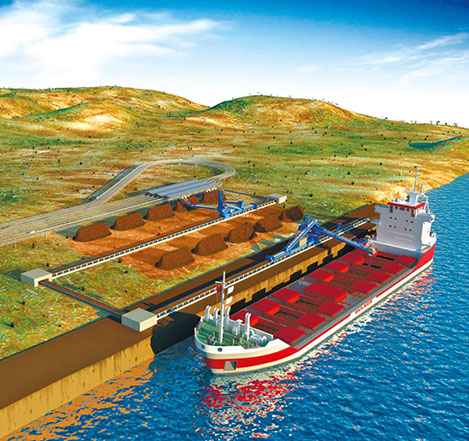
Basic features of the mounted system:
- speed – up to 120 km/h;
- load capacity of a freight train- up to 100 thousand tons;
- declivity-upto30%;
- transportation distance – up to 5,000 km;
- volume of haulage-up to 250 million tons per year;
- cost of the complex-from 1.5-2 million USD/km.
Basic features of the suspension system:
- possibility of alignment with power lines;
- speed – up to 40 km/h;
- truck capacity- up to 5 tons;
- declivity-upto30%;
- transportation distance- up to 200 km;
- volume of haulage-up to 50 million tons per year;
- cost of the complex-from 1-1.5 million USD/km.
SkyWay in a special-purpose seaport
Advantages of using SkyWay:
- allows for the delivery of goods at the distance of 15-20 km from the coast without a considerable cost increase;
- makes it possible to deliver cargo to a seaport located in the area of natural depths (up to 50 meters), without dredging and shore protection works;
- a port and the SkyWay transport system compose an automated complex for the delivery of raw materials, which functions as a single logistics process.
Basic features of the suspension system:
- arrangement at the depth of up to 25-30 m;
- transshipment volume of bulk cargo – up to 250 million tons per year;
- type of handling – from rolling stock into the hold of a bulk carrier.
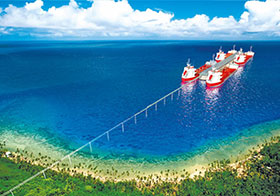
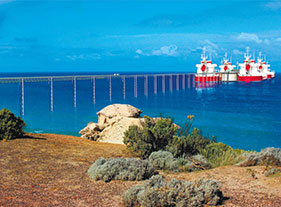
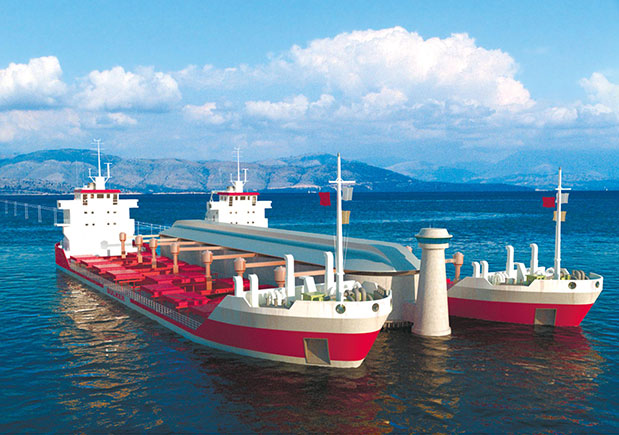
The cargo-and-passenger rail network includes three components:
interregional SkyWay, regional and local urban ones
A rail vehicle (unibus) consists of special modules:
- passenger module (of different equipping types);
- freight module (for different types of cargo);
- combined cargo-and-passenger modules;
- special-purpose modules.
Interregional SkyWay
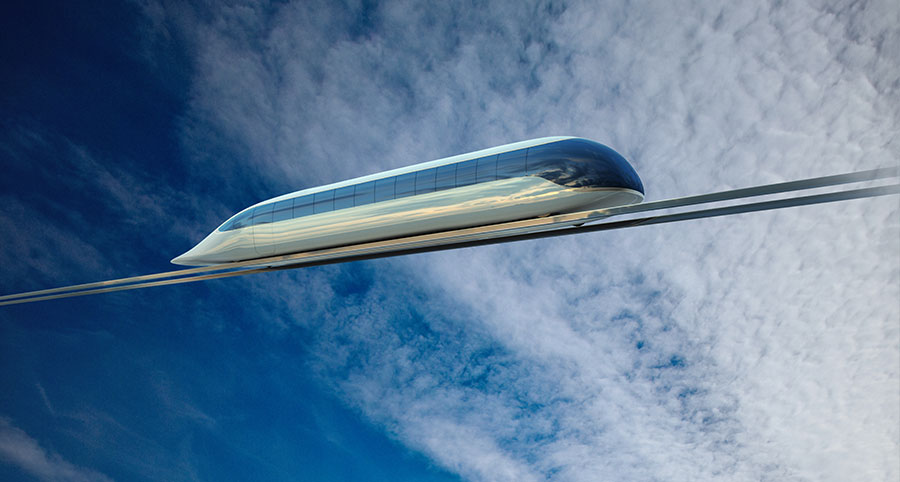
This is a string-rail overground transport system of the “second level” designed for high-speed traffic at the operational speed of up to 500 km/h and a carrying capacity of more than 100 000 passengers per day.
Basic features:
- estimated speed – up to 500 km/h;
- capacity – up to 100 passengers or more;
- length of span – 30-50 m and more (up to 2 km);
- height of supports – 6-10 m and more;
- maximum declivity of the way -15%;
- diesel fuel consumption – 0.7-0.9 liter per 100 passenger/km at the speed of 360 km/h;
- the cost of building a high-speed cargo-and-passenger track is from 2-3 million USD/km.
Advantages:
- 10-15 times less costly than monorail, surface mini-metro, high-speed railway and a magnetic levitation system;
- 2-3 times less costly than any traditional surface transport.
Regional SkyWay
Basic features:
- estimated speed – up to 300 km/h;
- capacity- up to 100 passengers and more;
- length of span – 30-50 m and more (up to 2 km);
- height of supports-6-10mor more;
- maximum declivity of the way-30%;
- diesel fuel consumption -0.5-0.7 liter per 100 passenger/km at the speed of 360 km/h;
- the cost of building a high speed cargo-passenger route-from 1.5-2 million USD/km.
City SkyWay
Basic features:
- passenger transportation at the operational speed of u p to 150 km/h;
- carrying capacity-more than 20,000 passengers per hour;
- 20-30 times less costly than subway.
This system fits perfectly into the existing infrastructure of any metropolitan city, solving transport problems of big cities due to the arrangement of a network of high-rise buildings with overland transport connection between them.
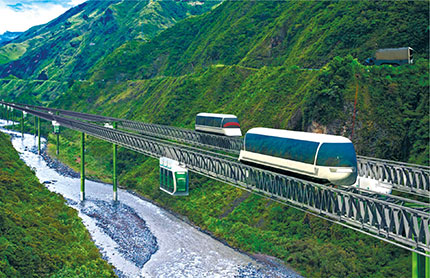
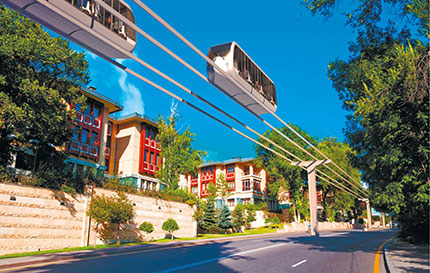
Anatoly Unitsky
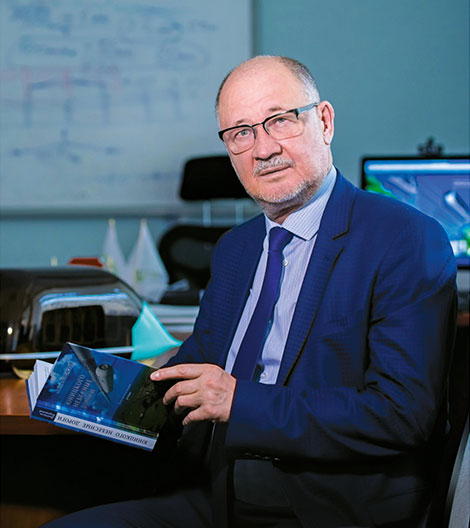
The General Designer of innovative technologies and string transport Anatoly Unitsky is a scientist and inventor, author of over 200 scientific papers, 18 monographs and more than 100 inventions in the field of construction, transport, machine building, electronics and chemical industries. He is the creator of string and planet-wide transport systems, as well as a number of transport infrastructure projects based on string technology.
The innovative string technology started its development 38 years ago, when Anatoly Unitsky decided to optimize the transport system by making it accessible, highly efficient and safe. The project has evolved from the stage of a string transport project to the stage of practical studies within this period.
In 2001, the technology of building a string-rail track structure, supports and basic components as well as elements of string freight transport have been successfully tested on the test site built at the town of Ozyory, Moscow region.
The current level of development of string transportation technology allows to immediately begin designing a particular route and order the production of rolling stock.
The novelty of Unitsky’s inventions is secured with Russian and international patents for inventions.
- two grants from the United Nations (1998 and 2002);
- availability of more than 50 Russian and Eurasian patents received within the period from 1994 till 2015;
- 18 scientific monographs (1995-2015);
- more than 100 scientific articles and reports at international conferences (1988-2015);
- more than 30 diplomas from international exhibitions (1994-2015);
- two gold medals from the All-Russian Exhibition Center (1998 and 2002);
- three certificates of the award winner of the National contest “Russian Brand” of the National Program for the promotion of best Russian goods, services and technologies (2001);
- two diplomas “Golden Chariot” of the National Public Prize from the Russian transport industry in the category “Project of the Year of Transport Industry” (2009 and 2011).
Elements of the SkyWay technology have undergone approbation:
- in field tests at the experimental site in Ozyory, Moscow region;
- in aerodynamic tests in St. Petersburg;
- at the bench and laboratory testing in Minsk and Moscow;
- on the acting models at scales of 1:15,1:10 and 1:15.
Patents
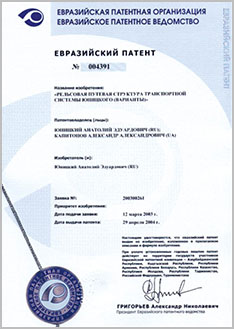
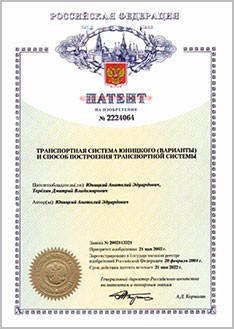
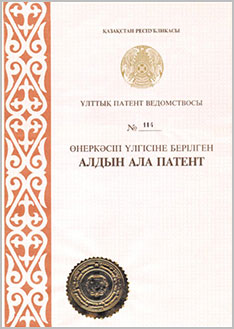
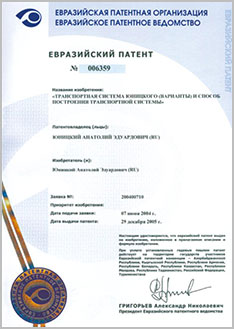
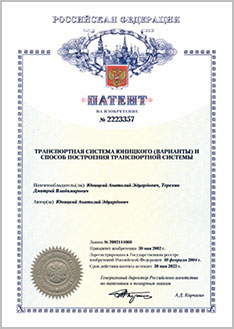
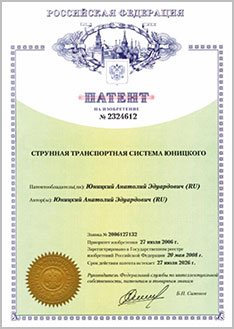
Awards
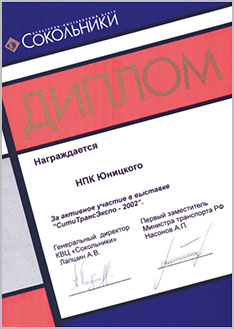
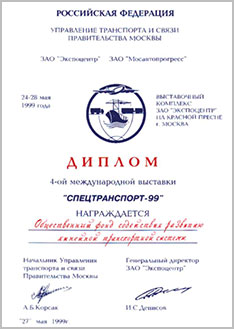
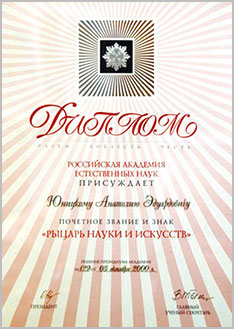
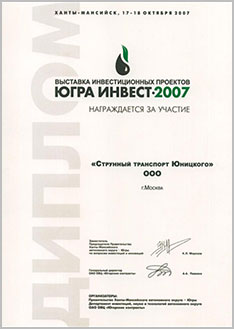
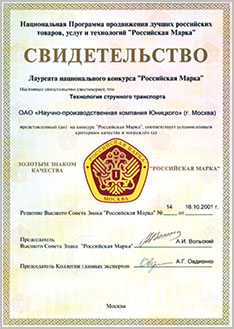
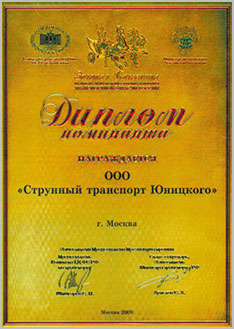

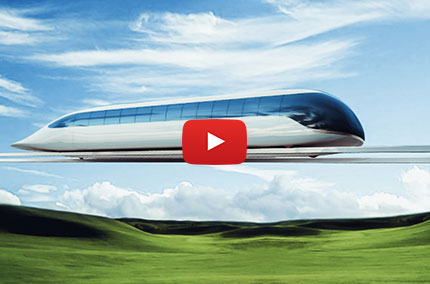
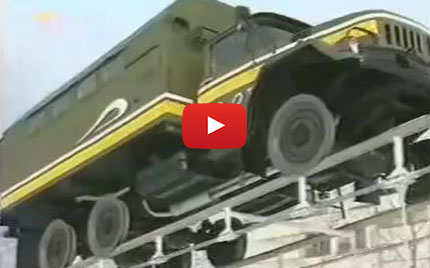
![Факты-о-Юницком.-Награды-и-дипломы-SkyWay.-Узнайте-всю-ценность-технологии-SkyWay.mp4_snapshot_02.21_[2015.09.28_11.41.05]](https://sky-way.org/wp-content/uploads/2015/09/Факты-о-Юницком.-Награды-и-дипломы-SkyWay.-Узнайте-всю-ценность-технологии-SkyWay.mp4_snapshot_02.21_2015.09.28_11.41.05.jpg)
![В-небо-на-колесе.-Фильм-о-Юницком.mp4_snapshot_04.57_[2015.09.28_11.44.55]](https://sky-way.org/wp-content/uploads/2015/09/В-небо-на-колесе.-Фильм-о-Юницком.mp4_snapshot_04.57_2015.09.28_11.44.55.jpg)
